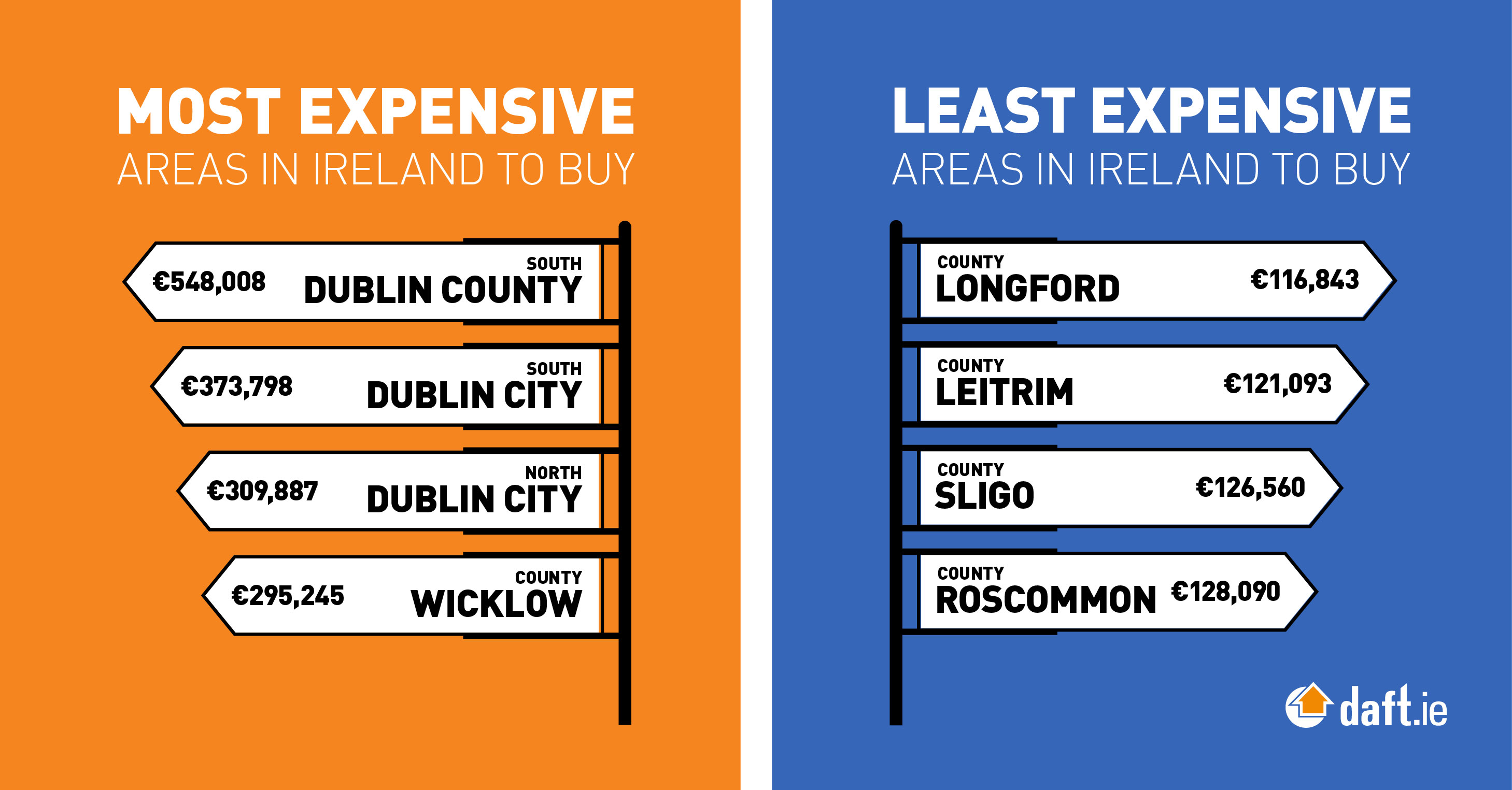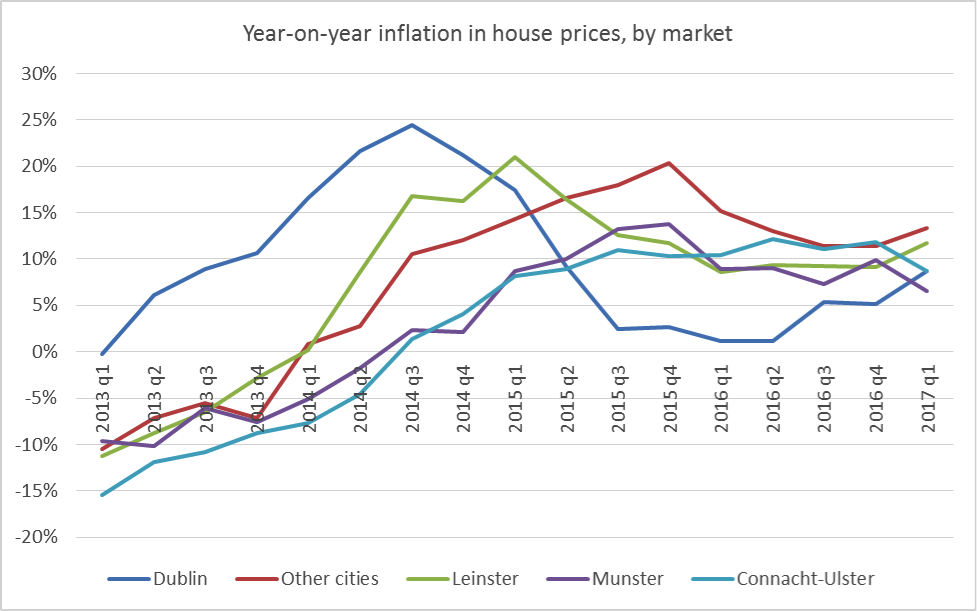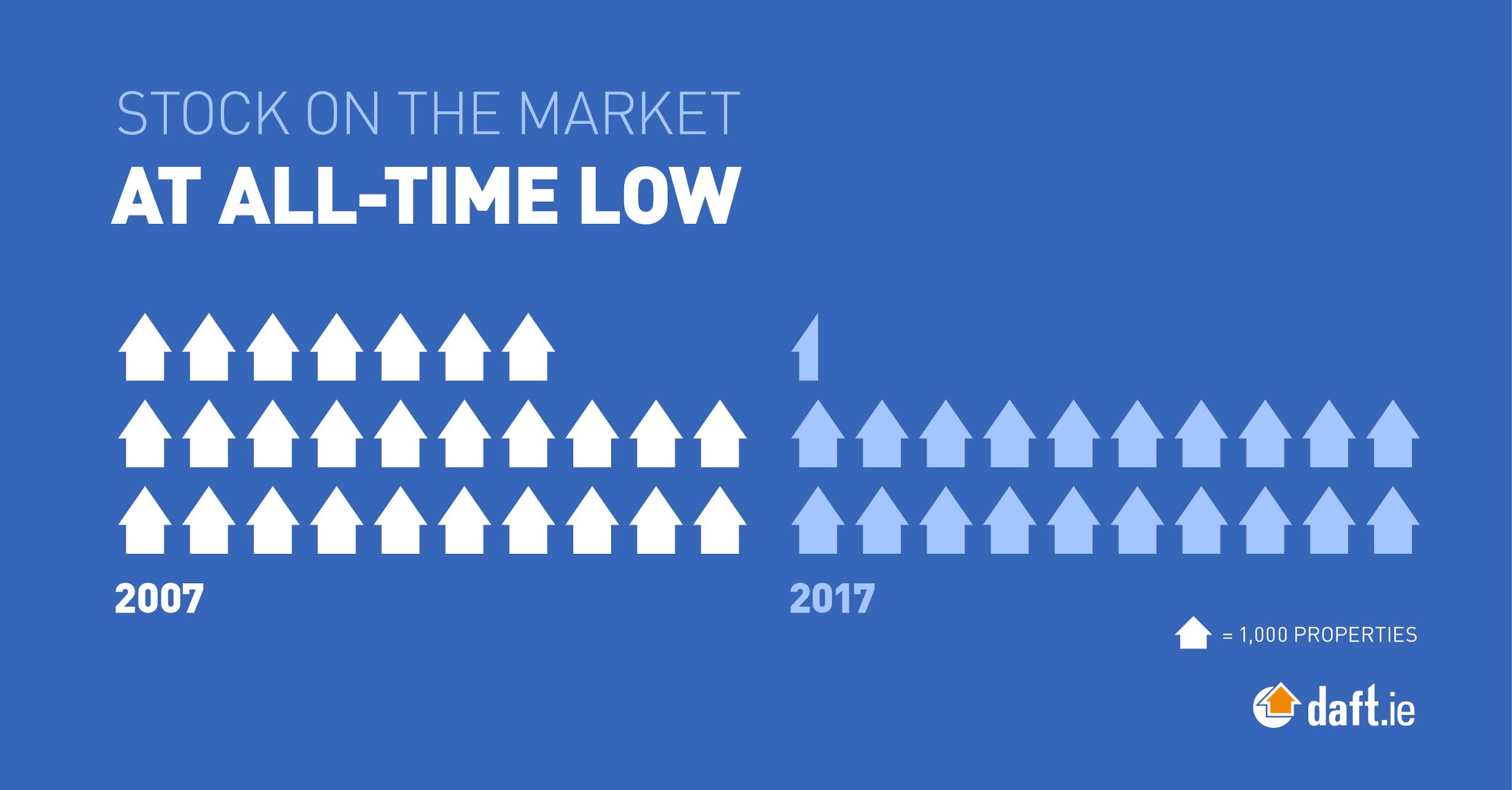Irish House Price Report Q1 2017 | Daft.ie
Daft Reports
- Ronan Lyons (House Price, Q1 2024)
- Ronan Lyons (Rental Price, Q4 2023)
- Ronan Lyons (House Price, Q4 2023)
- Ronan Lyons (Rental Price, Q3 2023)
- Ronan Lyons (House Price, Q3 2023)
- Ronan Lyons (Rental Price, Q2 2023)
- Ronan Lyons (House Price, Q2 2023)
- Ronan Lyons (Rental Price, Q1 2023)
- Ronan Lyons (House Price, Q1 2023)
- Ronan Lyons (Rental Price, Q4 2022)
- Ronan Lyons (House Price, Q4 2022)
- Ronan Lyons (Rental Price, Q3 2022)
- Ronan Lyons (House Price, Q3 2022)
- Ronan Lyons (Rental Price, Q2 2022)
- Ronan Lyons (House Price, Q2 2022)
- Ronan Lyons (Rental Price, Q1 2022)
- Ronan Lyons (House Price, Q1 2022)
- Ronan Lyons (Rental, Q4 2021)
- Ronan Lyons (House Price, Q4 2021)
- Ronan Lyons (Rental, Q3 2021)
- Ronan Lyons (House Price, Q3 2021)
- Ronan Lyons (Rental, Q2 2021)
- Ronan Lyons (House Price, Q2 2021)
- Ronan Lyons (Rental, Q1 2021)
- Ronan Lyons (House Price, Q1 2021)
- Ronan Lyons (Rental, Q4 2020)
- Ronan Lyons (House Price, Q4 2020)
- Ronan Lyons (Wealth, H2 2020)
- Ronan Lyons (Rental, Q3 2020)
- Ronan Lyons (House Price, Q3 2020)
- Ronan Lyons (Housing, July 2020)
- Ronan Lyons (Housing, June 2020)
- Ronan Lyons (Housing, May 2020)
- Ronan Lyons (Rental, Q1 2020)
- Ronan Lyons (House Price, Q1 2020)
- Ronan Lyons (Rental, Q4 2019)
- Ronan Lyons (House Price, Q4 2019)
- Ronan Lyons (Wealth, H2 2019)
- Ronan Lyons (Rental, Q3 2019)
- Ronan Lyons (House Price, Q3 2019)
- Pierre Yimbog (Rental, Q2 2019)
- Ronan Lyons (House Price, Q2 2019)
- Ronan Lyons (Wealth, H1 2019)
- Ronan Lyons (Rental, Q1 2019)
- Ronan Lyons (House Price, Q1 2019)
- Ronan Lyons (Rental, Q4 2018)
- Ronan Lyons (House Price, Q4 2018)
- Ronan Lyons (Wealth, H2 2018)
- Ronan Lyons (Rental, Q3 2018)
- Ronan Lyons (House Price, Q3 2018)
- Shane De Rís (Rental, Q2 2018)
- Ronan Lyons (House Price, Q2 2018)
- Ronan Lyons (Wealth, 2018)
- Ronan Lyons (Rental, Q1 2018)
- Ronan Lyons (House Price, Q1 2018)
- Ronan Lyons (Rental, Q4 2017)
- Ronan Lyons (House Price, Q4 2017)
- Ronan Lyons (Rental, Q3 2017)
- Ronan Lyons (House Price, Q3 2017)
- Katie Ascough (Rental, Q2 2017)
- Ronan Lyons (Wealth, 2017)
- Ronan Lyons (House Price, Q2 2017)
- Ronan Lyons (Rental, Q1 2017)
- Ronan Lyons (House Price, Q1 2017)
- Ronan Lyons (Rental, Q4 2016)
- Ronan Lyons (House Price, Q4 2016)
- Ronan Lyons (Rental, Q3 2016)
- Ronan Lyons (House Price, Q3 2016)
- Ronan Lyons (School Report, 2016)
- Conor Viscardi (Rental, Q2 2016)
- Ronan Lyons (Rail Report, 2016)
- Ronan Lyons (House Price, Q2 2016)
- Ronan Lyons (Rental, Q1 2016)
- Ronan Lyons (House Price, Q1 2016)
- Ronan Lyons (Rental, Q4 2015)
- Ronan Lyons (House Price, Q4 2015)
- Ronan Lyons (Rental, Q3 2015)
- Ronan Lyons (House Price, Q3 2015)
- Marcus O'Halloran (Rental, Q2 2015)
- Ronan Lyons (House Price, Q2 2015)
- Ronan Lyons (Rental, Q1 2015)
- Ronan Lyons (House Price, Q1 2015)
- Ronan Lyons (Rental, Q4 2014)
- Ronan Lyons (House Price, Q4 2014)
- Ronan Lyons (Rental, Q3 2014)
- Ronan Lyons (House Price, Q3 2014)
- Domhnall McGlacken-Byrne (Rental, Q2 2014)
- Ronan Lyons (House Price, Q2 2014)
- Ronan Lyons (Rental, Q1 2014)
- Ronan Lyons (House Price, Q1 2014)
- Ronan Lyons (Rental, Q4 2013)
- Ronan Lyons (House Price, Q4 2013)
- Ronan Lyons (Rental, Q3 2013)
- Ronan Lyons (House Price, Q3 2013)
- Ronan Lyons (Rental, Q2 2013)
- Ronan Lyons (House Price, Q2 2013)
- Ronan Lyons (Rental, Q1 2013)
- Ronan Lyons (House Price, Q1 2013)
- Ronan Lyons (Rental, Q4 2012)
- Ronan Lyons (House Price, Q4 2012)
- Lorcan Sirr (Rental, Q3 2012)
- Padraic Kenna (House Price, Q3 2012)
- John Logue (Rental, Q2 2012)
- Ronan Lyons (House Price, Q2 2012)
- Barry O'Leary (Rental, Q1 2012)
- Seamus Coffey (House Price, Q1 2012)
- Joan Burton (Rental, Q4 2011)
- Ronan Lyons (House Price, Q4 2011)
- Philip O'Sullivan (Rental, Q3 2011)
- Sheila O'Flanagan (House Price, Q3 2011)
- Rachel Breslin (Rental, Q2 2011)
- Constantin Gurdgiev (House Price, Q2 2011)
- Cormac Lucey (Rental, Q1 2011)
- Eoin Fahy (House Price, Q1 2011)
- Lorcan Roche Kelly (Rental, Q4 2010)
- Ronan Lyons (House Price, Q4 2010)
- John Fitzgerald (Rental, Q3 2010)
- Patrick Koucheravy (House Price, Q3 2010)
- Gary Redmond (Rental, Q2 2010)
- Jim Power (House Price, Q2 2010)
- Jill Kerby (Rental, Q1 2010)
- Brian Lucey (House Price, Q1 2010)
- Michael Taft (Rental, Q4 2009)
- Alan McQuaid (House Price, Q4 2009)
- Dr. Charles J. Larkin (Rental, Q3 2009)
- Emer O'Siochru (House Price, Q3 2009)
- Ronan Lyons (Rental, Q2 2009)
- Oliver Gilvarry (House Price, Q2 2009)
- Brian Devine (Rental, Q1 2009)
- Dr. Liam Delaney (House Price, Q1 2009)
- Gerard O'Neill (Rental, Q4 2008)
- Ronan Lyons (House Price, Q4 2008)
- Dr. Stephen Kinsella (Rental, Q3 2008)
- Moore McDowell (House Price, Q3 2008)
- Shane Kelly (Rental, Q2 2008)
- Fergal O'Brien (House Price, Q2 2008)
- Eoin O'Sullivan (Rental, Q1 2008)
- Dermot O'Leary (House Price, Q1 2008)
- Dan O'Brien (Rental, Q4 2007)
- Frances Ruane (House Price, Q4 2007)
- John McCartney (Rental, Q3 2007)
- Ronnie O'Toole (House Price, Q3 2007)
- Ronan Lyons (Rental, Q2 2007)
- Constantin Gurdgiev (House Price, Q2 2007)
- Fintan McNamara (Rental, Q1 2007)
- Rossa White (House Price, Q1 2007)
- Geoff Tucker (Rental, Q4 2006)
- Damien Kiberd (House Price, Q4 2006)
- Pat McArdle (House Price, Q3 2006)
- Marc Coleman (House Price, Q2 2006)
- David Duffy (House Price, Q1 2006)
- Austin Hughes (House Price, Q4 2005)
- David McWilliams (House Price, Q2 2005)
The figures from the latest Daft.ie House Price Report show a strengthening of house price inflation across the country. The year-on-year change in the average list price nationally was 9.4% in the first quarter of 2017, the highest it has been since the second quarter of 2015
Then, inflation was on the way down - from a high of over 15% - as the impact of the Central Bank mortgage rules was kicking in. But after reaching just 6.1% in early 2016, inflation has risen again. That upward pressure is entirely down to Dublin. The inflation rate outside the capital is more or less the same now (9.9%) as a year ago (9.8%).

But in the capital, house price inflation has increased from 1.2% in early 2016 to 8.7% in early 2017. Of Dublin's 25 markets - the 22 postal districts, plus North, West and South County Dublin - a year ago, none of them had prices increasing by 10% or more. Indeed five areas, including some of most expensive, had falling prices in early 2016.
Now, however, none of the 25 markets in Dublin is experiencing falling prices, i.e. increased affordability. And nine of the markets are seeing double-digit increases. In a number of parts of the city - including Dublin 1, Dublin 7 and Dublin 10 - prices are now up over 70% from their lowest point. Across the city as a whole, prices increased by an average of €17,500 in the first three months of 2017 alone and have risen by almost €120,000 in the last five years.
But the problem is not just limited to Dublin. In the four other major cities, and across Leinster outside Dublin, the average increase in prices in the first three months of 2017 was €10,000. These regions too have seen the prices rise by 50% or more on average in the last few years.
The problem is least acute in Munster, Connacht and Ulster outside the cities. In these parts of the country, which make up about 37% of households, prices have risen by 30% since the start of 2014. But, with the exception of the final three months of 2014, 2015 and 2016 - when the market goes into hibernation - prices have risen in each quarter since the start of 2014

It does look, though, for the moment that in the non-city parts of Munster, Connacht and Ulster, house price inflation has peaked. The graph accompanying this commentary shows the year-on-year increase in house prices, by region, since the start of 2013, when the Dublin market bottomed out. It shows successive waves of house price inflation. The first, in Dublin, peaked in mid-2014 at 25%, but cooling dramatically once Central Bank rules were brought in in early 2015. The second is in the rest of Leinster, at over 20% in early 2015, as those priced out of the Dublin market moved further out.
The third wave can be seen in the "Other Cities" category - which includes Cork, Galway, Limerick and Waterford. Inflation in this market peaked in late 2015, again at over 20%. In these locations, the Central Bank rules meant in effect only a loan-to-value restriction and not a loan-to-income restriction, as prices were (and remain) significantly lower, even though incomes do not vary nearly as much.
The final two regions shown - Munster and Connacht-Ulster - have far less dramatic peaks in inflation, 14% in late 2015 in Munster and 12% in mid-2016 in Connacht-Ulster. Not only were these peaks less dramatic than the 20%-plus seen elsewhere, in both these regions, inflation appears to be subsiding: it is 7% in Munster and 9% in Connacht-Ulster.

However, elsewhere in the country, house price inflation has re-emerged as a problem in the first few months of 2017. This is consistent with the obvious consequence of the significant stimulus to demand given in late 2016. Both the change in mortgage rules for first-time buyers and the "Help-to-Buy" scheme make it easier for first-time buyers - by far the largest chunk of the market - to bid higher prices.
It is unfortunate that the primary focus of policy efforts late last year, when it came to the housing market, was to further stimulate demand and prices, rather than supply and quantities. Adding up the four components of demand - obsolescence, falling household size, natural increase and net migration - it is clear that the country needs at least 40,000 and in reality probably 50,000 homes per year. But in recent years, the number of new homes built has been at most one quarter of that.
Given that huge shortfall - one that has been evident now in the housing market since 2011 - it is incumbent on policymakers to focus their efforts on increasing housing supply where it is needed. And given the evidence from this report and other sources, that demand is concentrated in and around Ireland's cities.


